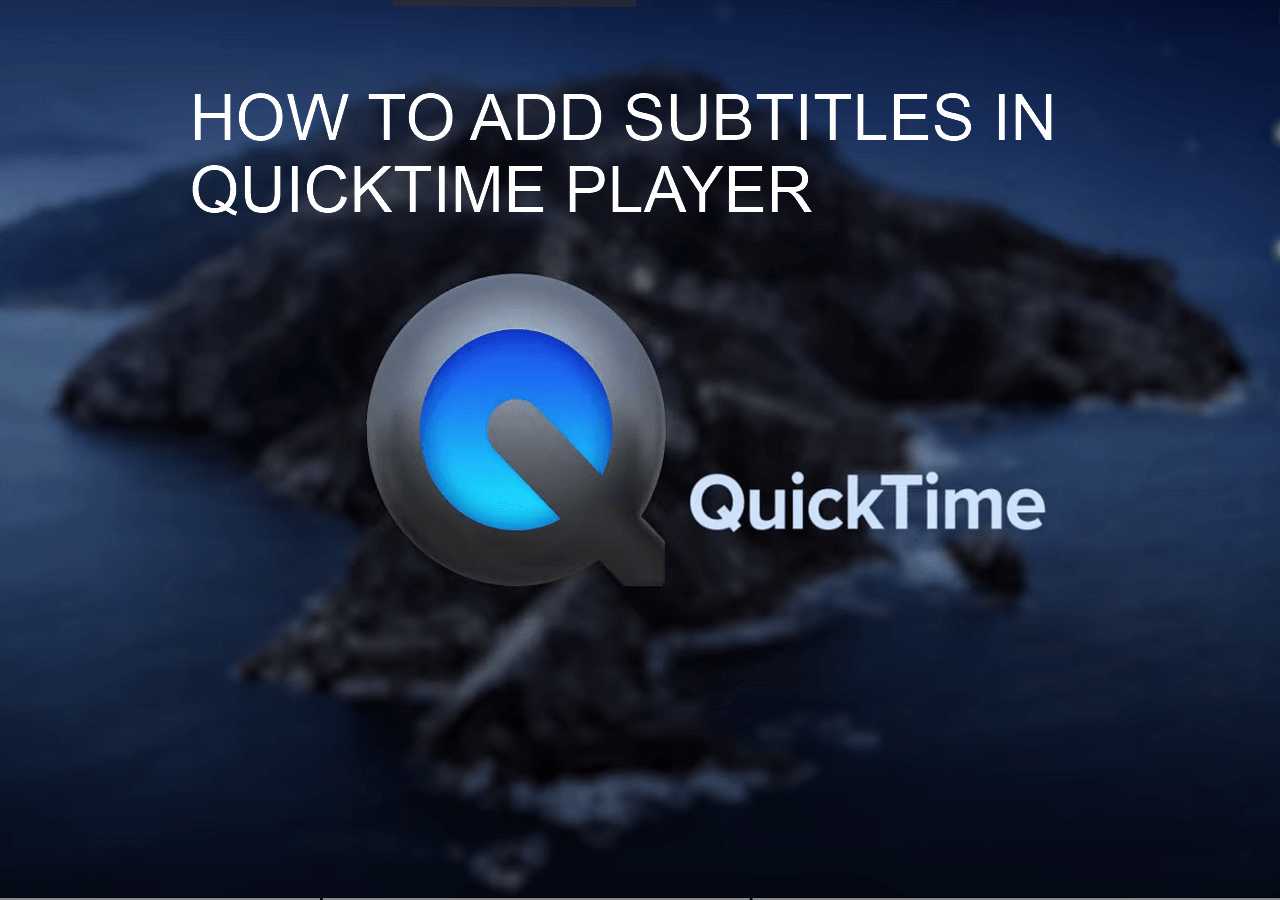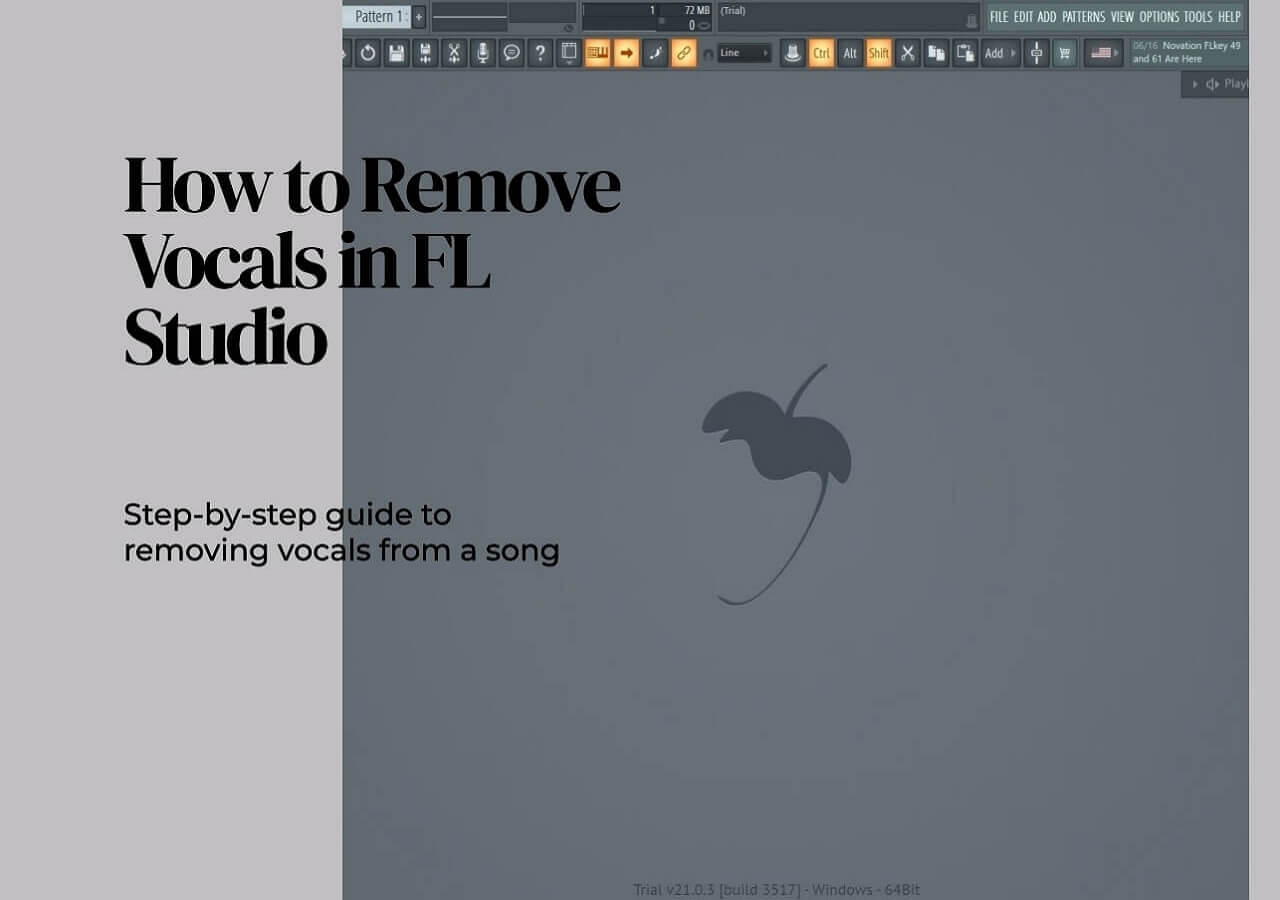-
![]()
Sofia Albert
Sofia has been involved with tech ever since she joined the EaseUS editor team in March 2011 and now she is a senior website editor. She is good at solving various issues, such as video downloading and recording.…Read full bio -
![]()
Melissa Lee
Melissa Lee is a sophisticated editor for EaseUS in tech blog writing. She is proficient in writing articles related to screen recording, voice changing, and PDF file editing. She also wrote blogs about data recovery, disk partitioning, data backup, etc.…Read full bio -
Jean has been working as a professional website editor for quite a long time. Her articles focus on topics of computer backup, data security tips, data recovery, and disk partitioning. Also, she writes many guides and tutorials on PC hardware & software troubleshooting. She keeps two lovely parrots and likes making vlogs of pets. With experience in video recording and video editing, she starts writing blogs on multimedia topics now.…Read full bio
-
![]()
Gorilla
Gorilla joined EaseUS in 2022. As a smartphone lover, she stays on top of Android unlocking skills and iOS troubleshooting tips. In addition, she also devotes herself to data recovery and transfer issues.…Read full bio -
![]()
Rel
Rel has always maintained a strong curiosity about the computer field and is committed to the research of the most efficient and practical computer problem solutions.…Read full bio -
![]()
Dawn Tang
Dawn Tang is a seasoned professional with a year-long record of crafting informative Backup & Recovery articles. Currently, she's channeling her expertise into the world of video editing software, embodying adaptability and a passion for mastering new digital domains.…Read full bio -
![]()
Sasha
Sasha is a girl who enjoys researching various electronic products and is dedicated to helping readers solve a wide range of technology-related issues. On EaseUS, she excels at providing readers with concise solutions in audio and video editing.…Read full bio
Content
0 Views |
0 min read
You may not hear of audio ducking, but you definitely encounter this feature in your daily life. In fact, every time you watch the TV, listen to music or play a video game, you can get the speakers' points all because of it.
So, you begin to wonder, what is audio ducking? And why does it matter? The bottom line is how to use it. Today, we are going to explore the ultimate answer for you about audio ducking in OBS. And if you are an iPhone user, don't worry; you'll get some good explanations in audio ducking in iPhone.
What Is Audio Ducking in OBS
When you stream games or play live music on OBS, viewers will not stick around if the audio is out of balance. Removing breathing sound in OBS is viable, while it also provides a compressor, allowing you to reduce the background sound as you speak.
A compressor is essential for stabilizing audio levels, especially when dealing with unpredictable loud sounds, like shouting or heated discussions. It automatically reduces excessive volume to prevent distortion and clipping, typically placed at the start of your audio processing chain.
To find the compressor, right-click on music or game to add the "Compressor" filter. And now, you can set up these related parameters.
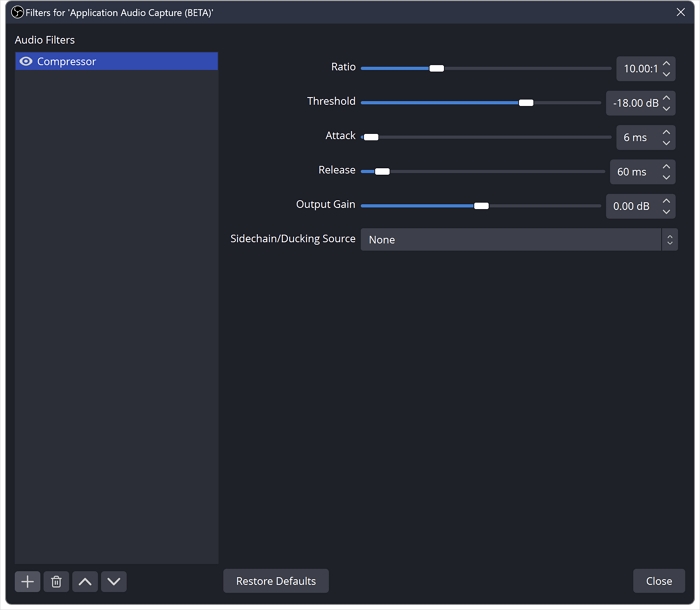
- Ratio: The compression ratio determines the extent of compression or gain reduction applied to a signal that surpasses the threshold level. A 2:1 ratio represents mild compression, reducing a signal 6dB above the threshold to 3dB above it, while a 6:1 ratio signifies intense compression.
- Threshold: When the signal hits this point, the compressor activates, applying compression according to the specified ratio. When levels fall below the threshold, a 1:1 ratio is employed, resulting in no gain reduction.
- Attack: Determines the time, measured in milliseconds, it takes for the compressor to achieve maximum gain reduction once the signal surpasses the threshold.
- Release: Determines the time (milliseconds) for the compressor to go back to zero gain reduction once the signal falls to the set threshold.
- Output Gain: Compression reduces signal volume, but output gain restores and boosts its average level, enhancing its presence among other audio sources.
- Sidechain/Ducking Source: When a compressor is placed on an audio output, like your desktop, Sidechain uses external input (e.g., from a microphone) to reduce the output's volume.
Watch the video guide about audio ducking in OBS for a visual experience.

Share the post with others in need if it helps!
How to Use Audio Ducking in OBS
Audio ducking in OBS reduces the volume of background sound when you speak into the microphone, so your voice is loud and clear over other audio sources.
Now, we know this feature is disguised as the compressor in OBS, and we totally understand its options. How to use it is the next step.
Step 1. Launch OBS from your desktop and start the recording or streaming live.
Step 2. Right-click on the audio mixer you want to drop down the volume and select "Filters."
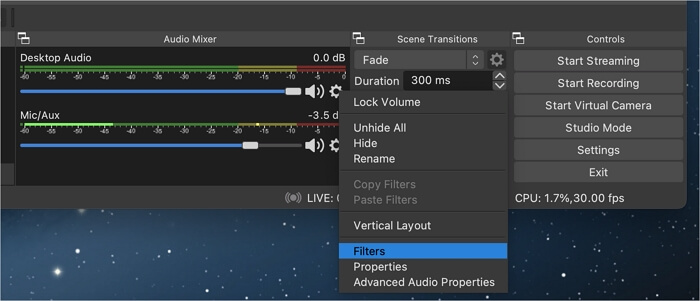
Step 3. A pop-up window will appear, and click the "+" to select the filter.

Step 4. Select "Compressor" and specify the name of the filter, or leave it by default.

Step 5. Configure the ducking settings. We've explained all the available options in the filter. Now, the following are some reference values for you to start with. Experiment with these parameters and find the best for you.
- Ration: 7:1
- Threshold: -32dB
- Attack: 200ms
- Release: 850ms
- Gain Output: 0dB
- Sidechain/Ducking Source: Choose your micophone
While OBS can help you reduce noise interference when streaming, it bails out for finished recordings. Thus, to remove noise or vocals from a song or recording, you can always trust EaseUS online vocal remover, an online free program for vocal removal.
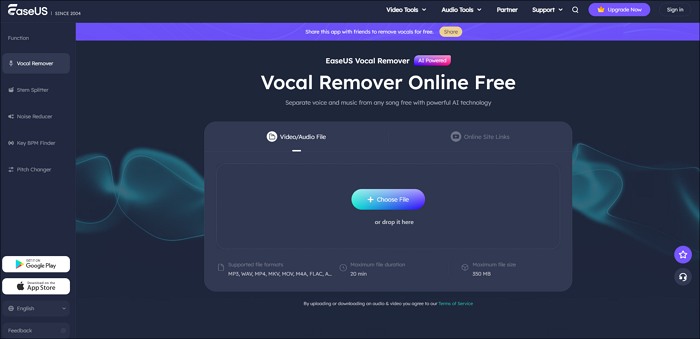
With it, you can separate vocals from instrumental and extract music and accompaniment for karaoke using AI. This comes without any audio artifacts or distortion. So, it is a good choice to enhance whispering from audio.
This vocal remover supports MP3, WAV, AAC, AIFF, M4A, FLAC, and other formats. You can upload a single audio file up to 20 minutes of 350 MB. Try the free tool now.
Final Thoughts
In conclusion, audio ducking in OBS is a powerful technique that can significantly improve the quality of your live streams or recorded content. By automatically lowering the volume of background audio when there's speech or other important audio, you can ensure that your viewers have a seamless and enjoyable experience.
For those looking to enhance their audio further, consider using EaseUS Online Vocal Remover. This tool simplifies vocal removal from songs, adding an extra dimension to your audio production.
With OBS and EaseUS Vocal Remover, you have the tools to create captivating content. Happy streaming and content creation!
FAQ about Audio Ducking OBS
1. Should audio ducking be on?
This is up to your specific needs and situations. Audio ducking is helpful to keep audio intelligible and audible in live performances, podcasts, and radio. But it may also decrease the system audio level. It all boils down to your objectives and preferences.
2. What does audio ducking do?
Audio ducking brings down other background sounds while making a main audio source stand out so the audio source is audible. This is usually used to enhance the overall listening experience in phone calls, conferences, film and television, and music production.
3. What is Windows auto ducking in OBS?
Audio ducking lowers the background sound as you speak. Windows has this feature embedded in the system by default, and you can go to the communications panel to choose the reduction amount. While OBS provides a compressor effect to balance the audio by adjusting various parameters.


